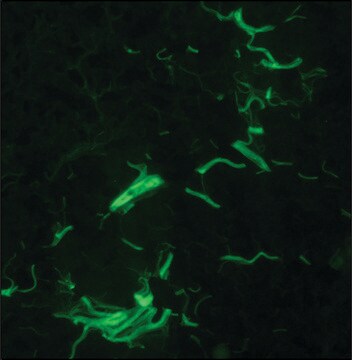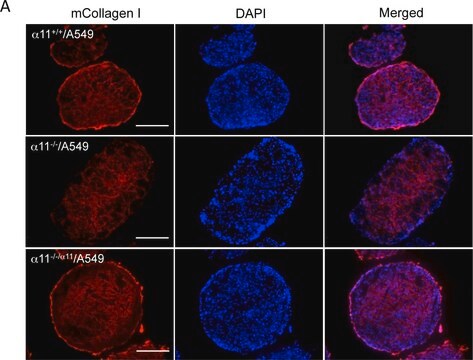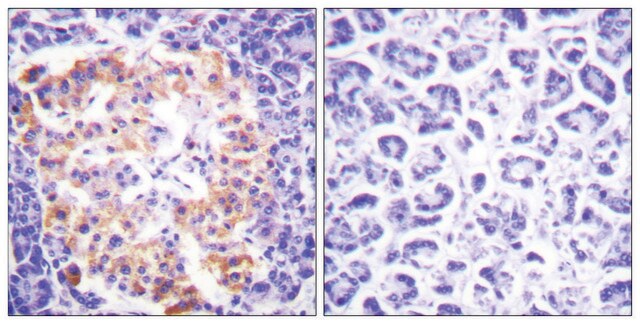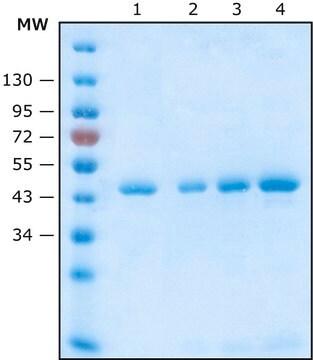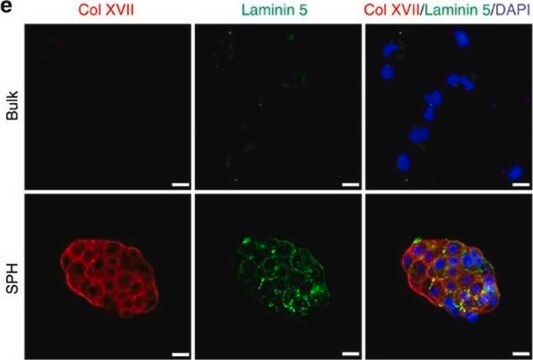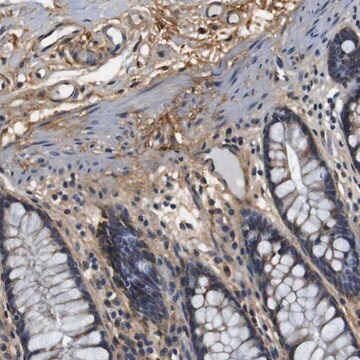AB755P
Anti-Rat Collagen Type I Antibody
Chemicon®, from rabbit
Synonyme(s) :
Anti-CAFYD, Anti-EDSC, Anti-OI1, Anti-OI2, Anti-OI3, Anti-OI4
About This Item
Produits recommandés
Source biologique
rabbit
Niveau de qualité
Forme d'anticorps
affinity isolated antibody
Type de produit anticorps
primary antibodies
Clone
polyclonal
Produit purifié par
affinity chromatography
Espèces réactives
rat
Fabricant/nom de marque
Chemicon®
Technique(s)
ELISA: suitable
immunocytochemistry: suitable
immunohistochemistry: suitable (paraffin)
radioimmunoassay: suitable
Isotype
IgG
Adéquation
not suitable for Western blot
Numéro d'accès NCBI
Numéro d'accès UniProt
Conditions d'expédition
wet ice
Modification post-traductionnelle de la cible
unmodified
Informations sur le gène
human ... COL1A1(1277)
Description générale
Spécificité
Immunogène
Application
1:40-1:80 dilution for immunofluorescent staining of frozen rat skin and liver tissues. The antibody is also reactive on paraffin embedded rat tissues (skin, liver) at a tdilution of 1:500 using an ABC detection system.
Qualité
Collagen Type I (cat. # AB755P) staining pattern/morphology in rat skin. Tissue is pre-treated with Citrate pH 6.0, antigen retrieval. Immunoreactivity is seen fiber-staining on paraffin section.
Rat Skin
Forme physique
Remarque sur l'analyse
Autres remarques
Informations légales
Vous ne trouvez pas le bon produit ?
Essayez notre Outil de sélection de produits.
Code de la classe de stockage
13 - Non Combustible Solids
Classe de danger pour l'eau (WGK)
WGK 1
Point d'éclair (°F)
Not applicable
Point d'éclair (°C)
Not applicable
Certificats d'analyse (COA)
Recherchez un Certificats d'analyse (COA) en saisissant le numéro de lot du produit. Les numéros de lot figurent sur l'étiquette du produit après les mots "Lot" ou "Batch".
Déjà en possession de ce produit ?
Retrouvez la documentation relative aux produits que vous avez récemment achetés dans la Bibliothèque de documents.
Notre équipe de scientifiques dispose d'une expérience dans tous les secteurs de la recherche, notamment en sciences de la vie, science des matériaux, synthèse chimique, chromatographie, analyse et dans de nombreux autres domaines..
Contacter notre Service technique